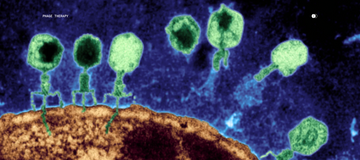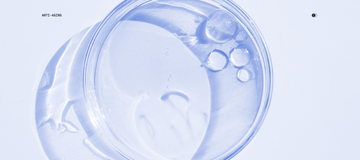When you become intimate with a new partner, you're not just sharing an emotional connection—you're literally exchanging microscopic life forms that can fundamentally alter how you smell. Recent scientific research reveals that sexual contact creates a fascinating biological phenomenon where partners transfer bacteria that can completely change their natural scent profiles, sometimes making people smell like everything from farm animals to cumin to rotting onions.
The Science Behind Scent Transfer
Your body odor isn't actually produced by sweat itself—it's created by the unique community of bacteria living on your skin. When commensal microbes on the skin metabolize compounds in human sweat, unpleasant body odor often results, as sweat is naturally almost entirely odorless until members of the skin microbiota metabolize these secretions to produce bad-smelling byproducts.
During intimate contact, a 10-second intimate kiss can transfer approximately 80 million bacteria between partners, while sexual intercourse allows for even more extensive microbial exchange. Studies show that microbiota transmission from one partner to another through vaginal sex can persist for several days, suggesting that sexual activities not only change the genital microbiota but could last for several days, allowing putative pathogens to colonize and/or overgrow.
A groundbreaking study analyzing couples found that during sexual intercourse, the genital microbiome can be exchanged between sexual partners, with researchers applying neutral theory modeling to demonstrate that this bacterial transmission appears to be a stochastic process—essentially a biological lottery that determines which microbes successfully colonize their new host.
What Different Bacteria Actually Smell Like
The specific bacteria that populate your skin after intimate contact can produce dramatically different odors, each with its own distinctive chemical signature:
Sulfur-Based Stenches: 3-methyl-3-sulfanylhexan-1-ol (3M3SH) is a thioalcohol, produced by Staphylococcus hominis, which makes the underarms smell like rotten onions or meat. Meanwhile, hydrogen sulfide (H2S) has a specific foul smell, often compared to the odor of rotten eggs, produced by anaerobic bacteria that degrade sulfur-containing amino acids.
Barnyard and Food Odors: Key volatile fatty acids that contribute to body odor include 3-methyl-2-hexenoic acid (3M2H), which has a 'goat-like' odor, and 3-hydroxy-3-methylhexanoic acid (HMHA), which has a 'cumin-like' odor, produced by some members of Corynebacterium. If you have smelly feet, it is probably because Staphylococcus epidermis has degraded the leucine in your sweat to isovaleric acid, a cheesy-smelling compound.
Vinegar and Vegetable Scents: Propionic acid is present in many sweat samples as a breakdown product of some amino acids by propionibacteria, and because propionic acid is chemically similar to acetic acid, body odors may be identified as having a pungent, cheesy and vinegar-like smell. Other volatile sulfur compounds include ethanethiol, S-ethyl thioacetate, diethyl disulfide and dimethyl sulfide, which are associated with distinctive, sweet, musty smell of vegetables, often being described as similar to the odor of cooked onion.
The Good Bacteria: Natural Deodorizers
Not all bacterial transfers result in unpleasant odors. Some bacteria can actually improve your scent profile. Research involving 200 participants with self-proclaimed body odour revealed that Staphylococci species, as well as a lower diversity of species, was associated with a better odour. Significant negative correlations were observed between odor intensity and Acinetobacter schindleri and certain Cutibacterium species, suggesting these bacteria may help neutralize malodors.
Skin spectrophotometry analysis found that males who consumed more fruits and vegetables were significantly associated with more pleasant smelling sweat, which was described as "floral, fruity, sweet and medicinal qualities", indicating that diet can influence which beneficial bacteria thrive on your skin.
The Intimate Microbiome Connection
The exchange of bacteria during intimate contact isn't random—it follows specific patterns influenced by biological compatibility. People can subconsciously sense others' immune system genes by scent, with studies showing women most often preferred the t-shirt of the man that had the most complimentary immune system that would broaden their offspring's spectrum of immunity. However, the immune genes and resulting sweat don't have much of a smell. Instead, a person's body odor comes from the specific microbes that consume their sweat, skin cells, and oils.
This creates a fascinating biological feedback loop where by making their hosts match with and look well to a possible partner, microbes help to ensure their own continued existence. Some researchers even suggest that levels of oxytocin in your body can be enhanced by consuming certain probiotics, e.g. certain Lactobacilli strains.
Long-Term Changes and Adaptation
The microbial changes from intimate contact aren't temporary. When sexual intercourse occurred, researchers found an increase of the Lactobacillus proportions in the penile after unprotected vaginal sex, and microbiota changes persisted after 4 days. This suggests that new bacterial communities can establish themselves and fundamentally alter your long-term scent profile.
For couples, this creates an opportunity for scent convergence over time. People's sexual partners could impact both their gut microbiome and their immune system, with mice that received stool transfers from men who had anal intercourse showing different microbiomes than mice whose stool donors only had vaginal intercourse, indicating that intimate behaviors can influence microbial communities throughout the body.
Understanding Your Microbial Signature
Your post-intimacy scent changes depend on multiple factors: the specific bacteria your partner carries, your existing microbial community, your immune system compatibility, the personal care products you use, your daily activities, and your diet. The production of specific odorants is often limited to specific genera or strains of bacteria, and the accumulation of odorous compounds might result from diet, specific composition of microbiota, as well as compromised function of the liver, intestines and kidneys.
This emerging science suggests that body odor after intimate contact isn't just about hygiene—it's a complex biological signature created by the unique microbial ecosystem that you and your partner have created together. Whether you end up smelling like cumin, roses, or something less pleasant depends on the microscopic lottery of bacterial exchange that occurs every time you're intimate.
As our understanding of the microbiome deepens, we're learning that the phrase "chemistry between partners" may be more literally accurate than we ever imagined—right down to the bacteria that determine how we smell to the world.
Want to learn about your unique microbial scent? The MD-03 Body Odor Protocol™ comes with ongoing testing, clinical guidance, and custom microbial therapy to help you optimize your odor microbiome.
References
- Kort, R., Caspers, M. P., van de Graaf, A., van Egmond, W., Keijser, B., & Roeselers, G. (2014). Shaping the oral microbiota through intimate kissing. Microbiome, 2(1), 41.
- Mändar, R., Punab, M., Borovkova, N., Lapp, E., Kiiker, R., Korrovits, P., ... & Ausmees, K. (2015). Complementary seminovaginal microbiome in couples. Research in Microbiology, 166(5), 440-447.
- Ma, Z. S. (2022). Microbiome transmission during sexual intercourse appears stochastic and supports the Red Queen hypothesis. Frontiers in Microbiology, 12, 789983.
- Caballero-Flores, G., Pickard, J. M., & Núñez, G. (2019). Variations in vaginal, penile, and oral microbiota after sexual intercourse: A case report. Frontiers in Medicine, 6, 178.
- Khanna, K. (2021). Microbial origins of body odor. ASM.org, American Society for Microbiology.
- Natsch, A., Derrer, S., Flachsmann, F., & Schmid, J. (2006). A broad diversity of volatile carboxylic acids, released by a bacterial aminoacylase from axilla secretions, as candidate molecules for the determination of human-body odor type. Chemistry & Biodiversity, 3(1), 1-20.
- Rudden, M., Herman, R., Rose, M., Bawdon, D., Cox, D. S., et al. (2020). The molecular basis of thioalcohol production in human body odor. Scientific Reports, 10(1), 12500.
- Havlicek, J., Lenochova, P., Oberzaucher, E., Grammer, K., & Roberts, S. C. (2018). Understanding the microbial basis of body odor in pre-pubescent children and teenagers. Microbiome, 6(1), 213.
- Callewaert, C., Hutapea, P., Van de Wiele, T., & Boon, N. (2014). Deodorants and antiperspirants affect the axillary bacterial community. Archives of Dermatological Research, 306(8), 701-710.
- Wedekind, C., Seebeck, T., Bettens, F., & Paepke, A. J. (1995). MHC-dependent mate preferences in humans. Proceedings of the Royal Society B, 260(1359), 245-249.




























